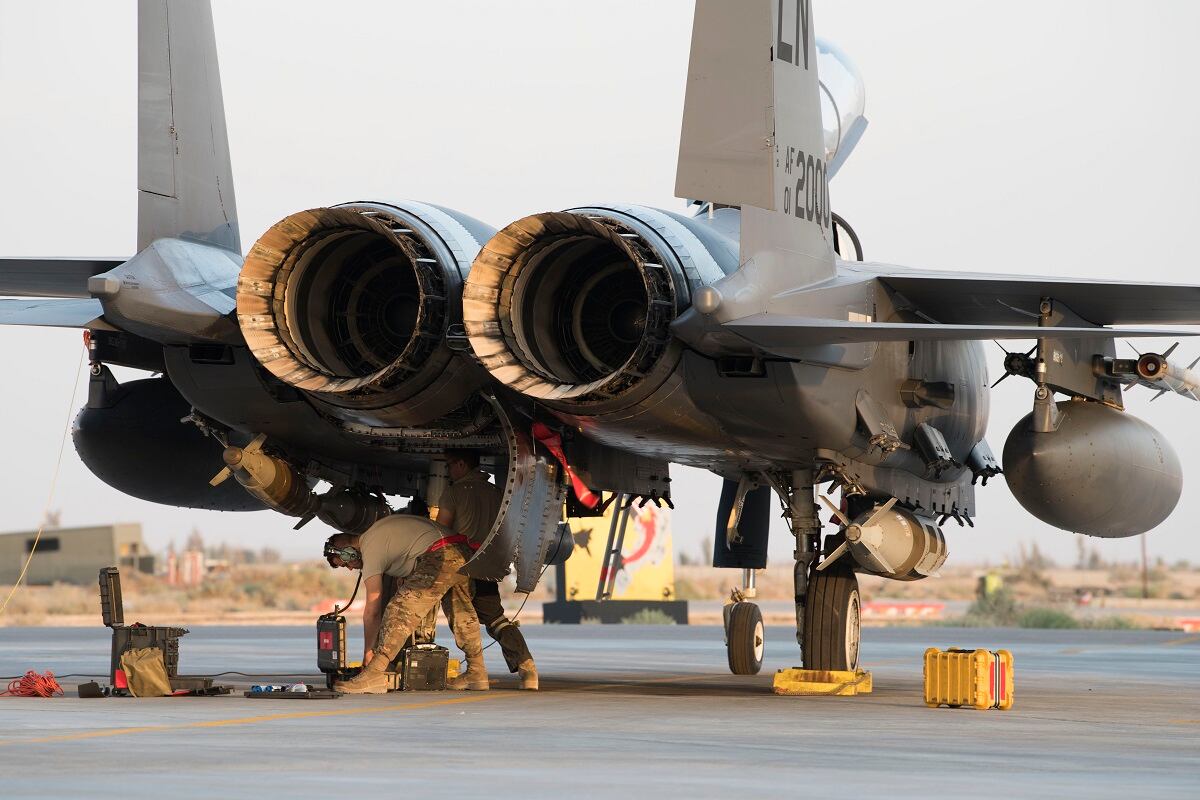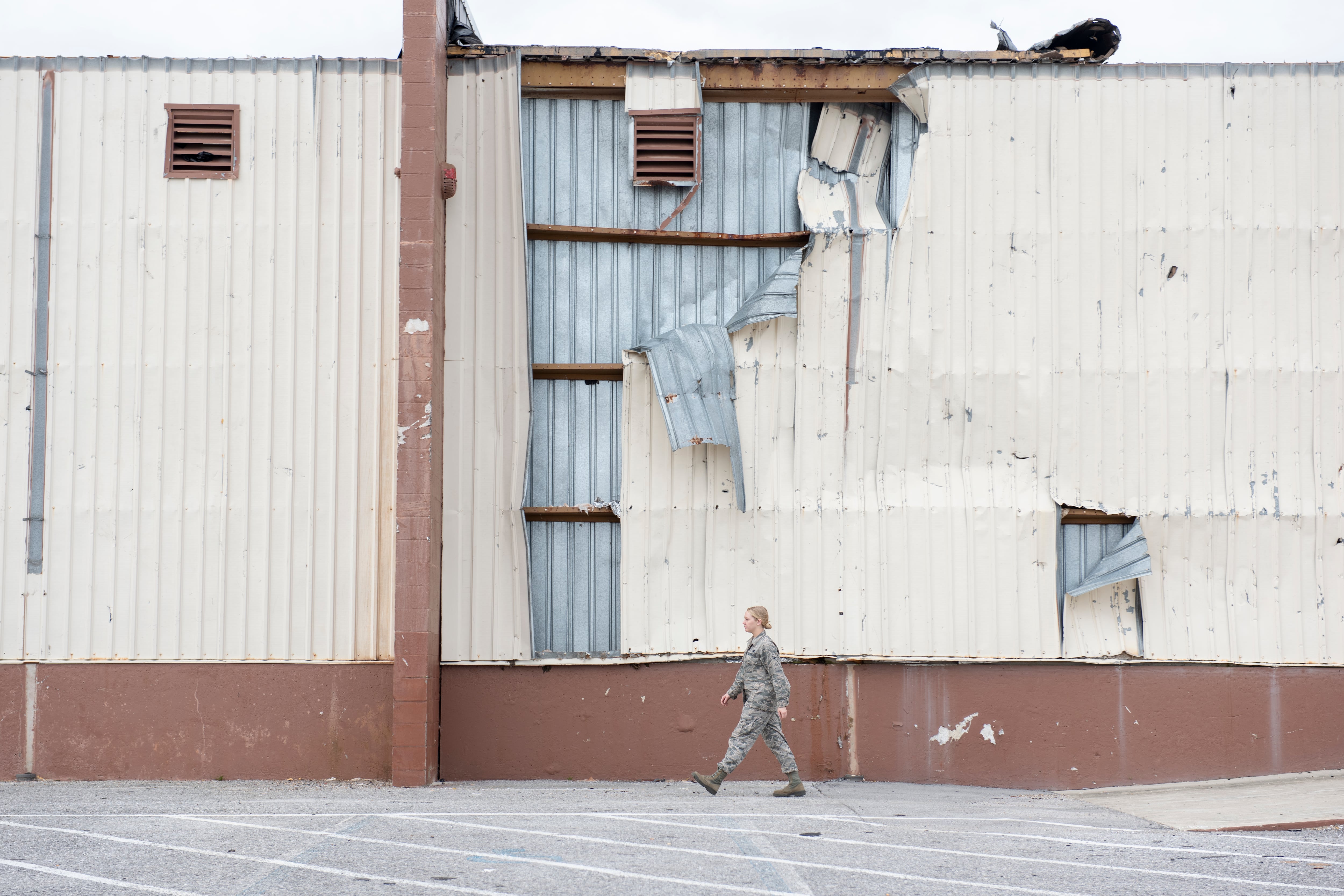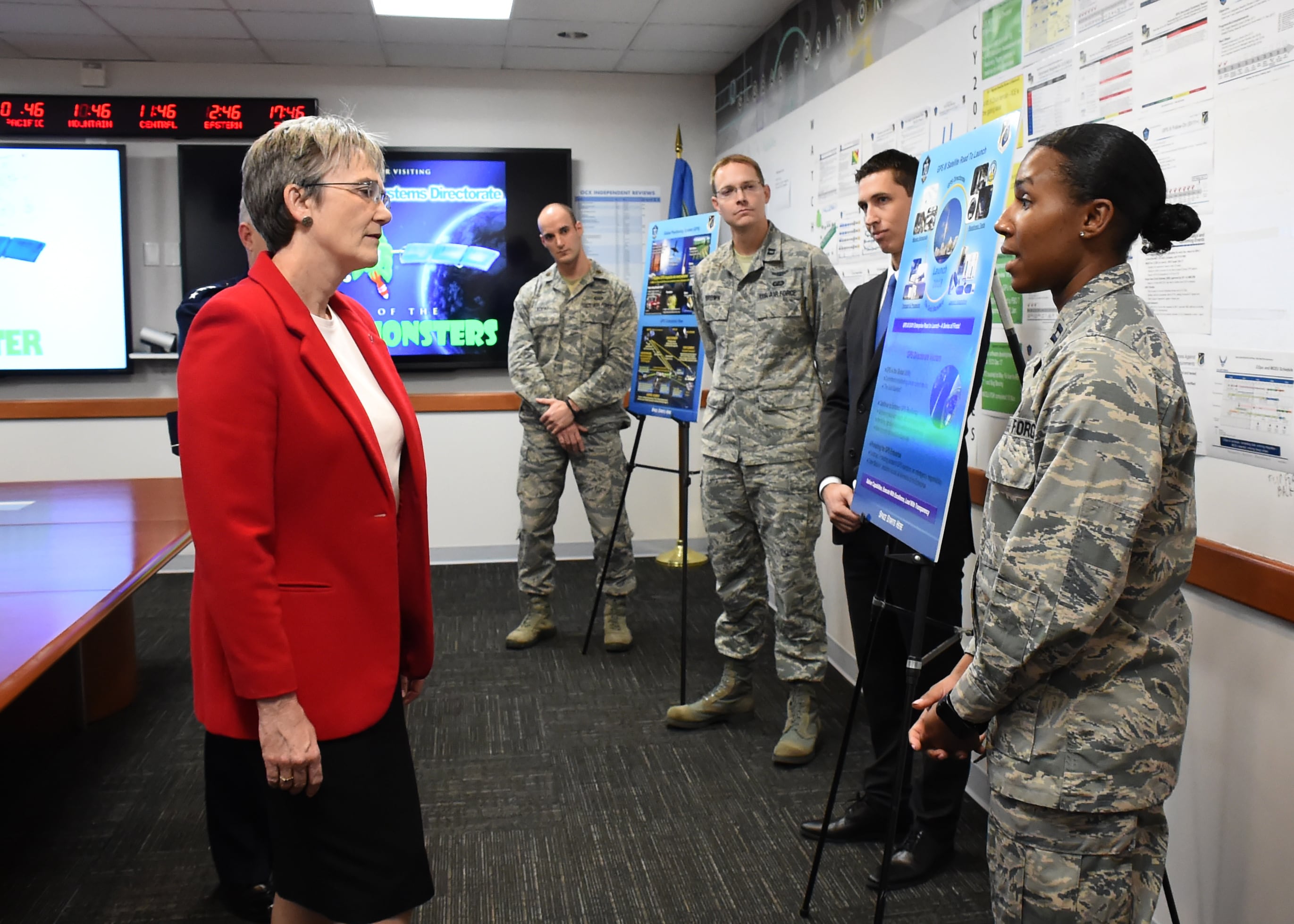JOINT BASE ANDREWS, Md. — It’s the first day of Joint Base Andrews annual air show, and Air Force Secretary Heather Wilson is clearly having the time of her life.
After speaking to students in the morning about science and technology, she is surrounded by a small crowd of female airmen from the Thunderbirds demonstration team. Watching the team’s performance is penciled in for later that afternoon.
RELATED

Wilson is beaming. She has three weeks left in her role as head of the Air Force, a job she has relished since being confirmed in 2017. Then, she will return to academia, becoming the next president of University of Texas El Paso.
While Wilson knows she’s sitting down for an exit interview, she quickly makes clear that doesn’t want to be seen as a lame duck. She has more she wants to accomplish — like establishing new officer categories to help optimize the the professional development of airmen with specialized careers — before her departure on May 30, when her deputy Matt Donovan will step into the role on an acting basis.
“There will always be more things on the to-do list,” Wilson tells Defense News in an exclusive May 10 interview. But there are a few accomplishments that she is particularly proud of, like making changes to increase squadron readiness, implementing acquisition reform and rescinding burdensome instructions that airmen have complained about.
While Wilson’s enthusiasm for the job has been obvious, her tenure as Air Force secretary has also been characterized by her attention to advancing aerospace technology, her calculated and shrewd dealings with Congress and with her Pentagon bosses, and her close relationship with Air Force Chief of Staff Gen. Dave Goldfein.
“If you look at the statutes, all of the authority is the secretary’s. Almost all of the influence is the chief’s. If you work together, you can get a heck of a lot done, and he and I established a pattern of working together,” Wilson said. “It is probably the closest executive relationship I have ever enjoyed. It is respectful. It is the way the constitution and the laws of this country meant this to work.”
Goldfein agrees, telling Defense News that the pair have been able to “move some mountains” through their partnership.
“I think both of us are pretty proud of that. It’s not that we always agree, but we have a respectful dialogue that you would want two senior leaders to have that drills into the details and ensures we’re moving in the right direction,” he said. “She’s just been brilliant.”
A former Republican representative of New Mexico, Wilson was able to get lawmakers onboard with major budgetary shifts, like the cancellation of the JSTARS recap program, breaking a precedent where Congress often resisted Air Force policy.
She also emerged as a strong proponent of the Air Force’s research community, ordering a new science and technology strategy that aims to fund disruptive tech faster and with more competition.
RELATED

“Secretary Wilson had the guts to look the Russia and China threat in the face,” said Rebecca Grant, an aerospace analyst for IRIS Independent Research. “She’s the one who said hey, the USAF needs more bombers, tankers and fighters to pull off this great power strategy. She was fearless about presenting the analysis and didn’t care if it made her popular or not.”
Grant added: “One of her biggest strengths was she always made time to listen.”
Dave Deptula, a retired lieutenant general and dean for the Mitchell Institute for Aerospace Studies, pointed to Wilson’s advocacy for growing the service from 312 to 386 squadrons.
“Secretary Wilson has been an effective advocate for the value that the Air Force brings to the nation as an integral element of joint force military operations,” Deptula said. “Honesty and candor in establishing the tie between the Air Force we need to meet the demands of the National Security and Defense strategies will be her legacy.”
But Wilson has had to be circumspect during an era where the Pentagon’s normal day-to-day budget concerns have been overshadowed by controversial policies ordered by President Donald Trump.
For instance, Wilson outspokenly advocated for additional funding the Air Force needs for the immediate recovery of Tyndall and Offutt Air Force Bases in Florida and Nebraska, which were devastated by natural disasters this fiscal year.
RELATED

But when lawmakers have questioned how the Air Force could ask for billions of dollars while the White House makes moves to transfer funds from the services to border control activities, she is careful to distance herself — and the Air Force entirely — from the president’s policies, instead framing the issue as a failure of Congress.
In her interview with Defense News, she again focused the blame on Congress, calling their “lack of attention” to the problem “inexcusable” and dodging numerous questions about whether it was appropriate to use Air Force funds for border control.
“I served in Congress for eight years,” she said. “I don’t remember a time where we’ve waited eight months before doing anything about a major national disaster. To me, this is about whether the insurance company is going to come though.”
One major issue where Wilson has remained a vocal power player has been the military’s space reorganization, specifically the potential creation of a Space Force.
Wilson initially opposed the idea of creating a sixth military branch for space, then called the “Space Corps” by congressional advocates.
But when Trump began promoting the idea of a Space Force during visits with the troops — and eventually announced in June 2018 his intention to stand up the new service — Wilson’s tone softened. In September, she announced that she was on board with the president’s proposal. That didn’t make her any less vocal on the issue, or less critical about how the Defense Department was executing that guidance.
Just weeks after Wilson announced that she would support the Space Force plan, an Air Force estimate leaked to the press stated that establishing the Space Force would add $13 billion in new costs over five years.
The Pentagon’s own cost estimates rang in at about $2 billion over that same period, but Wilson has maintained that her data provided the most holistic look at what changes to the space enterprise would cost. The estimate included the funds needed to stand up a U.S. Space Command, as well as many more space personnel. In addition, the Space Force should include the intelligence community in order to be effective, she argued. (The Pentagon opted to keep space intelligence organizations separate and increases to the number of space billets to a minimum.)
Wilson also fought against the establishment of the Space Development Agency, a new organization for rapid space acquisition that she believes is duplicative and has an unclear mission.
RELATED

Wilson’s views on space have reportedly brought her into contention with Acting Defense Secretary Patrick Shanahan. But when she spoke to Defense News on Friday about changes to the space enterprise, she doesn’t shed much light on how she thinks the reorganization effort is going.
“There’s a lot of discussion going on right now,” she said. “The administration proposed and went forward to create a Space Force under the Air Force, and we’ve had lots of testimony on it, and I think we’re at the point where they will be making some decisions over the next couple months on the next steps to take.”
So what does she think that emerging space enterprise should look like?
“I tend to look at the problems we’re trying to solve, and then how we solve those problems.”
Does having the Space Force under the Department of the Air Force enable the military to solve those problems?
“I think it’s really important to keep space integrated with the joint force,” she said. “I also think it will help as we shift to a war-fighting domain. A lot of this is how we develop our people and how do we focus on war fighting and shift to a contested domain, and I think it actually helps to be part of a service where we have other war fighters who are used to contested domains.”
After former Defense Secretary Jim Mattis left the Pentagon, rumors swirled that Wilson could be in contention for the role. Advocates of Wilson pointed to her friendship with Vice President Mike Pence and close relationship with Congress, but ultimately all signs pointed to Shanahan being the president’s top choice.
I ask whether that impacted her decision to move on from the Air Force.
“I was recruited to come here by Secretary Mattis. I think his departure made it easier for the University of Texas to recruit me,” Wilson replied.
And with that, she moves on to the next item on the schedule: putting on a hard, protective suit so she can be safely “attacked” by military service dog while speaking to security forces. In the photos Wilson posts later that day on Twitter, she looks happy.
Valerie Insinna is Defense News' air warfare reporter. She previously worked the Navy/congressional beats for Defense Daily, which followed almost three years as a staff writer for National Defense Magazine. Prior to that, she worked as an editorial assistant for the Tokyo Shimbun’s Washington bureau.








